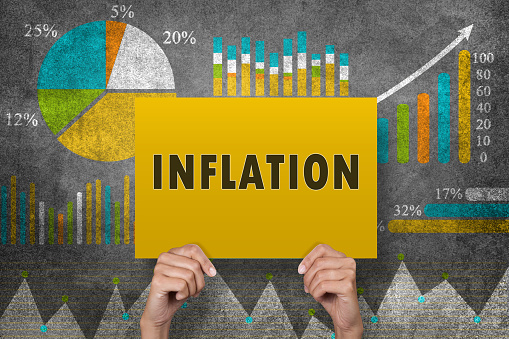Editor’s note: Paul Sparrow is an area managing partner and chief marketing officer at fractional CMO firm Chief Outsiders, Charleston, S.C.
In case you hadn’t noticed by the amount of extra cash you’ve had to spend – at the gas pump, in stores or with your vendors – inflation is back with a vengeance.
So how should businesses adjust their go-to-market strategy to ensure success in an inflationary environment?
The answer is simple: don’t. In fact, marketing today is similar to marketing in a non-inflationary environment, with a few caveats. To better understand this concept, ITR Economics offered some insights.
Is inflation impacting your market?
It is important to understand what is taking place in the competitive marketplace outside the walls of your enterprise. Is inflation having an impact on those markets? The ITR Economics Monthly Trends Report for June 2021 gives some helpful industry vertical insights. It remind us of the cyclical nature of the rate of inflation, historically. Inflation – like the Dow Jones, elevators and the sun – goes up and down.
That said, many business owners are concerned about whether higher interest rates are an inevitability should inflation continue to run rampant. Though interest rates may uptick modestly, ITR suggests those concerns should not interfere with a business's plans about growing the company and protecting the bottom line, especially in the short term.
While they suggest consumer price index inflation is on the horizon, there is no guarantee that any one factor will eventually cause interest-rate headaches.
The report also points out that business owners with concerns about higher interest rates are about a year ahead of what ITR has concluded via its analysis of the Federal Reserve and the bond market. The report says, “Our forecast calls for inflation to diminish starting in the second half of 2021.”
That means inflation is not going to rise indefinitely. So what's a business owner to do?
Marketing should be based on buyer’s journey, not inflation
The status quo will likely again reign supreme in the not too distant future. Even in an economy that's strongly impacted by inflation, now is not the time to pull back on the marketing spend. As long as a business’s marketing investments have a direct impact on the prospective buyer’s journey, the nurturing of existing clients and the continued visibility of the brand out in the marketplace, they are worth sustaining. Period.
Many CEOs made knee-jerk cuts to marketing and sales activities during the pandemic, and those decisions have negatively impacted their ability to take advantage of the economic rebound we’re currently experiencing. Don’t join their ranks.
This is especially true given the expectation that inflation will begin to dissipate in the second half of 2021. So now's the time to make some wise investments in marketing as well as sales. With the economy rebounding, every business owner should be taking an aggressive posture when it comes to driving and growing revenue, even more so than during the first months of the early rebound from the pandemic.
Key markets will be in full accelerated growth mode by end of 2021
ITR shares an overview of the core U.S. economy at a glance in its monthly trends report. Of the six different markets that have the greatest direct impact on the core U.S. economy, all of them are trending in a recovery or accelerating growth phase. This means the economy is rebounding, and by the end of 2021 all six core markets should be in an accelerating growth mode.
Review your company’s history before shifting marketing strategy
Though the current state of the economy is compelling, it’s still critical to have a handle on the historic economic health of your company before injecting a wad of corporate cash into marketing and sales initiatives.
CEOs should consider a two-phased diagnostic process recommended by ITR, which includes a long-term 12-month analysis, as well as a three-month short-term gauge. Let’s start with the 12/12 rate of change. This is a lagging indicator and by computing it, a business owner will know whether they are in one of four growth phases: recovery, accelerating growth, slowing growth or a recession. The same is true for the markets in which a business competes. But again, the key U.S. markets are favorable at present.
The second measure is to consider the 3/12 rate of change. It tells a business owner which direction the company is going. Are revenues moving up? Are they slowing? Or are they moving down quickly?
Focus on effective marketing programs
Having key insight around your consumer and buyer journey makes a big difference in planning the right marketing and sales strategies and tactics to grow your business. Whether or not you're directly affected by inflation, businesses should focus on effective programs that will resonate with buyers and prospects alike. In times of high inflation and a slowing economy, it is always wise to tighten the belt a bit, spending on only the most important tactics that address these things.
Focus on growth and make smart investments. Build a solid go-to-market plan that's based on the sort of insights detailed above – in particular the economic health of your company – and the economic condition of the markets in which you compete.
